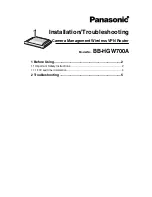
150-319-151-01, Revision 01
Appendix A - Specifications
HLU-319 List 5A
September 17, 1999
57
M
AXIMUM
P
OWER
D
ISSIPATION
The Maximum Power Dissipation measures the power that is converted into heat that builds up within the unit. It
contributes to the total heat generated in the space around the unit. It is used to determine the maximum number
of fully loaded shelves per bay that does not exceed the maximum allowable power dissipation density in
watts per square foot to comply with GR-63.
In COs, the maximum power dissipation for open-faced, natural convection-cooled mountings is limited to
134.7 watts per square foot per GR-63-CORE. The footprint of a standard 28-slot, 23-inch HMS-317 shelf in a
narrow aisle is 7.024 square feet. Therefore, the maximum bay dissipation is limited to 946 watts. Use this limit
and the parameters in
through
to determine the maximum number of HLU circuits that can
occupy one CO bay.
The thermal loading limitations imposed when using the HLU in a Controlled Environmental Vault (CEV) or
other enclosures are determined by applying its power parameters to the manufacturer's requirements for each
specific housing.
The 42.5 Vdc Power Consumption is the maximum total power that the HLU-319 consumes or draws from the
shelf power source. This parameter is needed when the HLU-319 is in a location remote to the CO it is serving. It
determines the battery capacity required to maintain an 8-hour, stand-by battery reserve for emergency situations.
Battery capacity, therefore, limits the maximum number of line units which can be installed in a remote enclosure.
Use the data in
through
to perform this analysis on a case by case basis.
M
AXIMUM
C
URRENT
D
RAIN
The Maximum Current Drain is the maximum current drawn from the shelf power supply when its at its minimum
voltage (-42.5
Vdc
). This determines the shelf fusing requirements. Use the 42.5 Vdc current data in
through
to determine the shelf fusing requirements for your particular HLU applications.
This is a worst case situation since it assumes the entire CO is subjected to the maximum power
density. More favorable conditions would permit increasing the number of shelves per bay
without jeopardizing the CO thermal integrity.














































